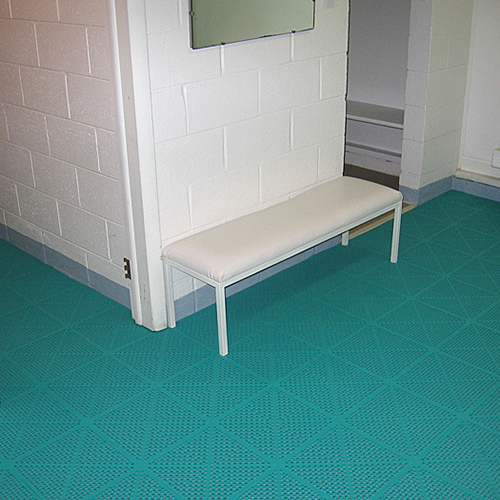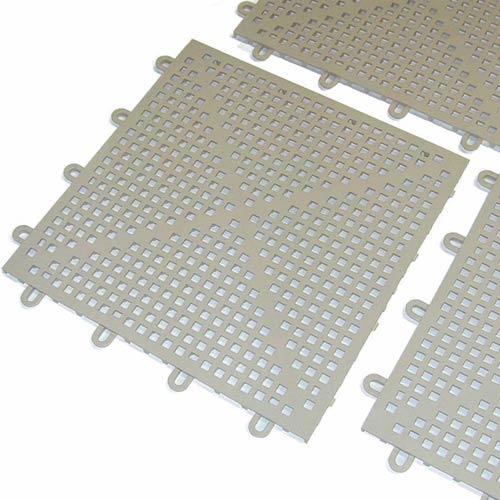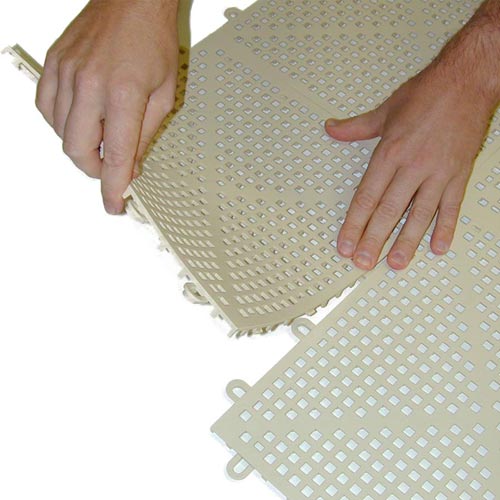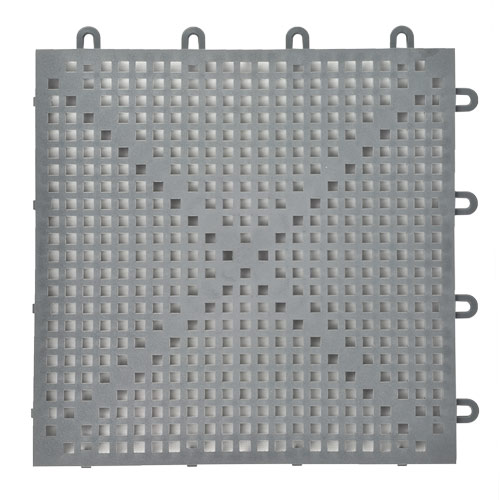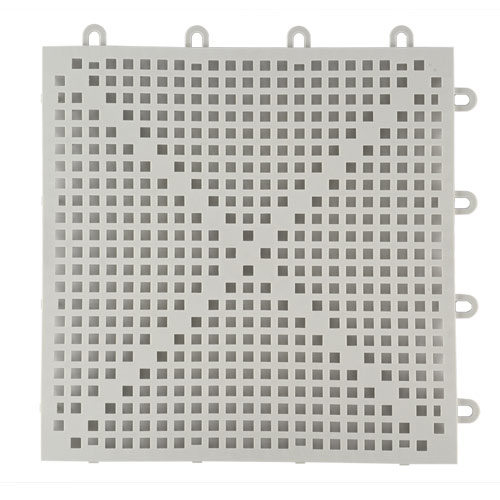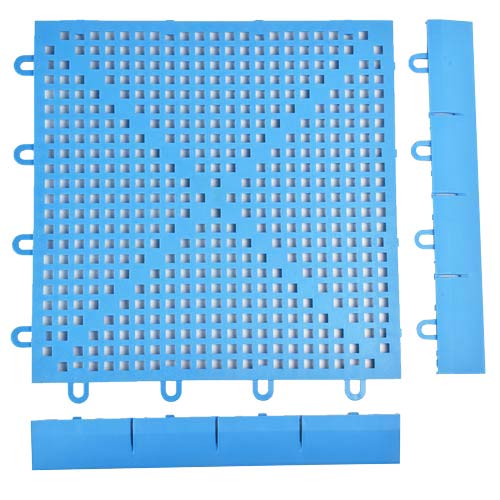Wet Area Flooring: SoftFlex Perforated Floor Tiles
Related Product: Z SoftFlex Floor Tile 3/8 Inch x 1x1 Ft. - Disc
You’ll discover all of those qualities in SoftFlex floor tiles. These tiles are safe, practical, and affordable, making them some of the best flooring for wet areas that you’ll find.
These tiles have a unique textured surface that helps to prevent slippage. They’re waterproof and highly durable, and are designed for indoor use in areas like showers, locker rooms, and spas and hot tubs.
Made of a soft PVC, these tiles are comfortable underfoot. They offer anti-fatigue benefits and flexibility, but they’re still extremely durable. SoftFlex Floor Tiles backed by a 10-year warranty.
The tiles’ perforated design is ideal for areas that are frequently wet. They have a perforated surface so water flows right through, instead of pooling on the surface and creating a slipping hazard. The tiles’ underside consists of dozens of small pegs that slightly lift the tiles up off of the subfloor. This elevated position enhances the tiles’ drainage capabilities, since it creates a channel where the water can drain away along the subfloor.
The presence of these perforations and the pegs also mean that air can flow through the tiles to promote faster drying. This can help to reduce mold and mildew growth, creating a safer, healthier flooring. The PVC tile material is antimicrobial.
SoftFlex floor tiles are available in six different colors, so you can choose the option that best matches the aesthetic of your space. These tiles are designed for indoor use and are very easy to clean. You can run a vacuum over the dry tiles to remove dust or use a household cleaner and a mop for a more thorough cleaning.
Installing SoftFlex Floor Tiles
These SoftFlex tiles are very easy to install, and they can save you the cost of hiring a professional to perform the installation. They can be dry laid over a hard, flat subfloor.Start by cleaning the subfloor to ensure that you’re not installing these perforated floor tiles over dirt.
Begin laying tiles in one corner of the area to be covered and attach the tiles, one by one. Their snap-in loops secure the tiles together, so you just need to align them and then connect them. Position the loops so that they face in the direction that you want to move in. It’s best to leave a ½ inch gap between the tiles and the walls when performing a wall-to-wall installation. This leaves room for the tiles to expand and contract with temperature fluctuations.
These soft floor tiles measure 1 by 1 foot, so they’re easy to handle and maneuver. They weigh less than 1 pound, so a single person can easily perform an entire installation.
If you need to cut the soft floor tiles, it’s easy. Just use a sharp utility knife or even a heavy-duty pair of scissors. The tiles are much easier to cut than rubber mats for wet areas, which can require repeated scoring and cuts before you work your way all entirely through.
Because these tiles are just 3/8 inch thick, they can be installed in most rooms without getting in the way of swinging doors and other obstacles. Ramp edges are also available, and they can ensure that there’s a smooth transition onto and off of this floor.
How slip resistant is this wet area flooring?
These wet area tiles are designed to help prevent slipping, and they do that in multiple ways. They feature a subtle surface texture that prevents slippage when the tiles are wet. The tiles’ perforations also give them more texture than a flat, non-perforated surface. Those perforations also ensure that standing water doesn’t pool on top of the tiles, helping to maximize traction and prevent slips and falls.Are SoftFlex tiles suitable for commercial flooring?
TileFlex tiles are extremely durable, and they’re suitable as both residential and commercial indoor flooring for wet areas. Consider installing them in shower areas, locker rooms, pool surrounds, and spas and hot tubs in commercial settings for a non-slip, safe, comfortable flooring.Why are so many wet area tiles perforated?
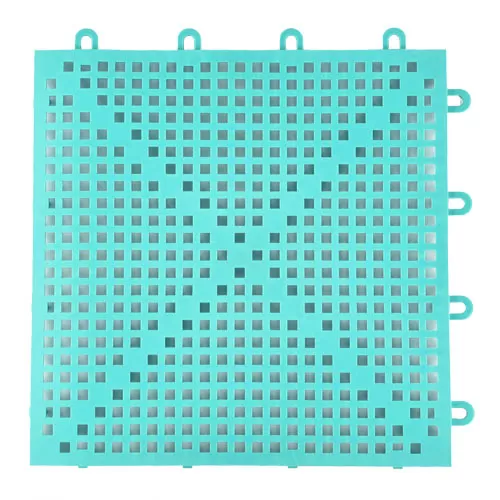
Wet area floor mats and tiles are usually perforated because those perforations let water quickly flow through the tiles, instead of pooling on top. Most of these tiles feature a raised base, so water flows underneath them and drains away. With no standing water on the tiles, you have a reduced risk of slipping and the surface is more comfortable for you, too. Once the water has drained away, air can flow through those same perforations to help speed the drying process and reduce mold and mildew development.
